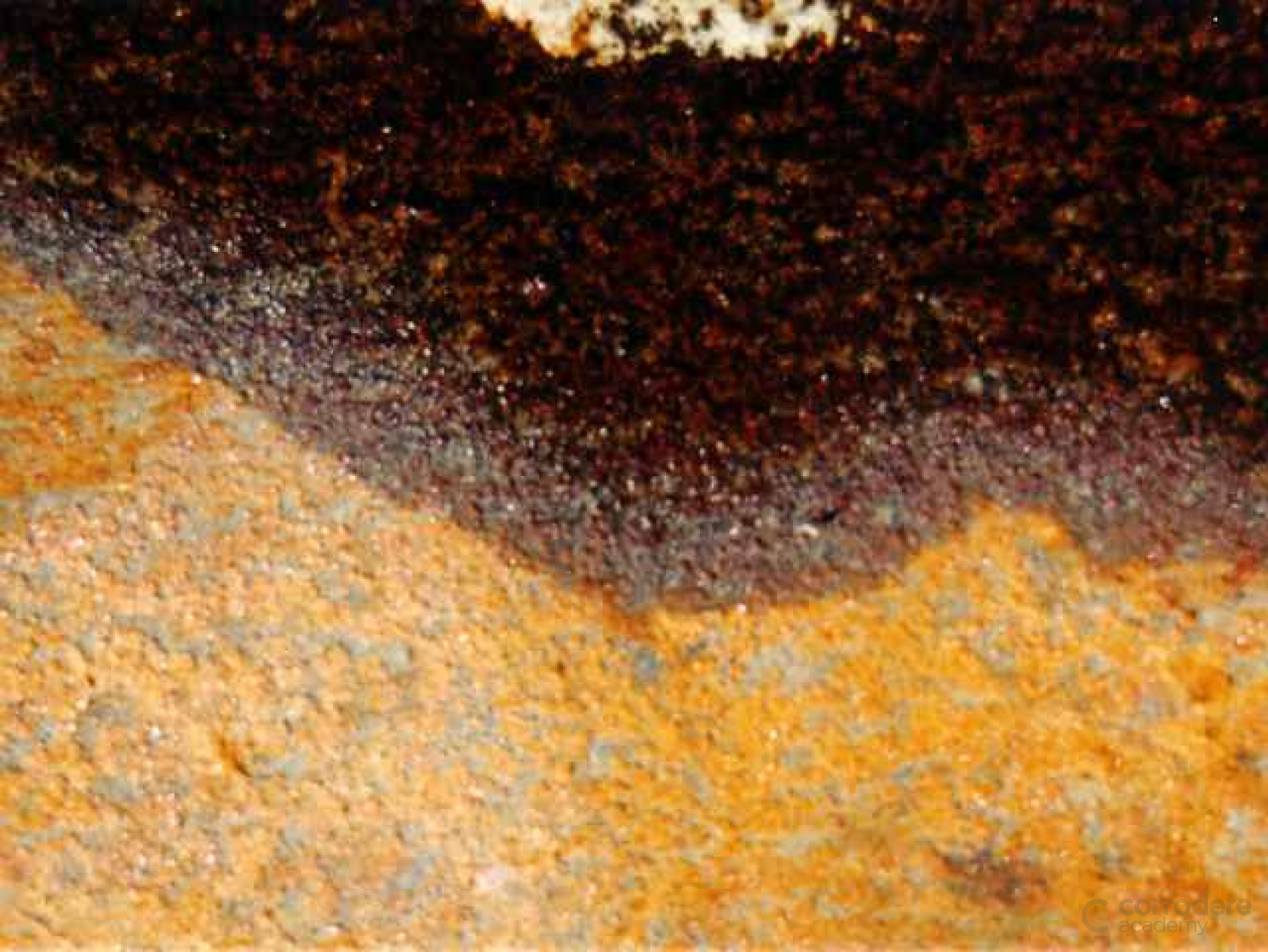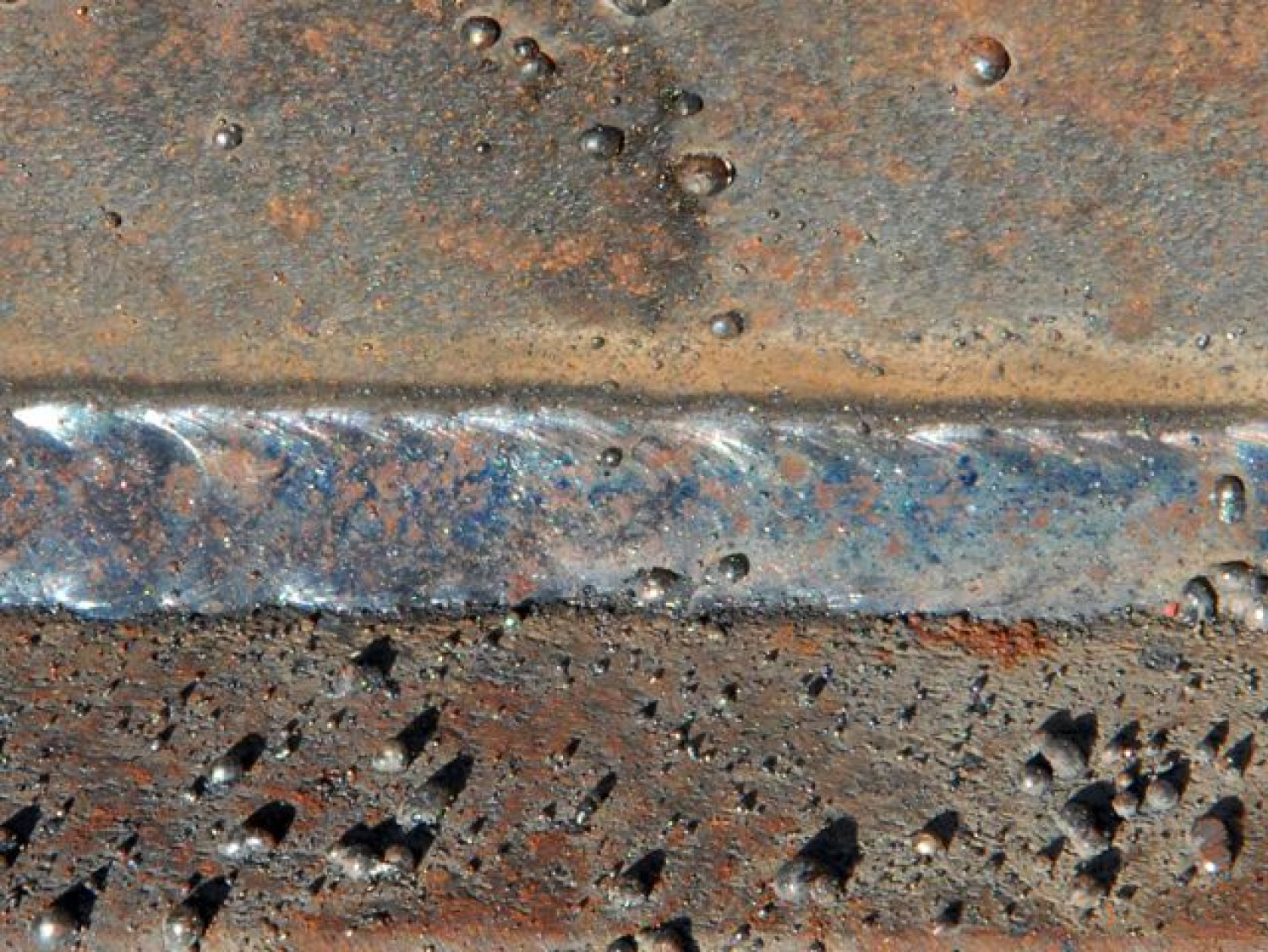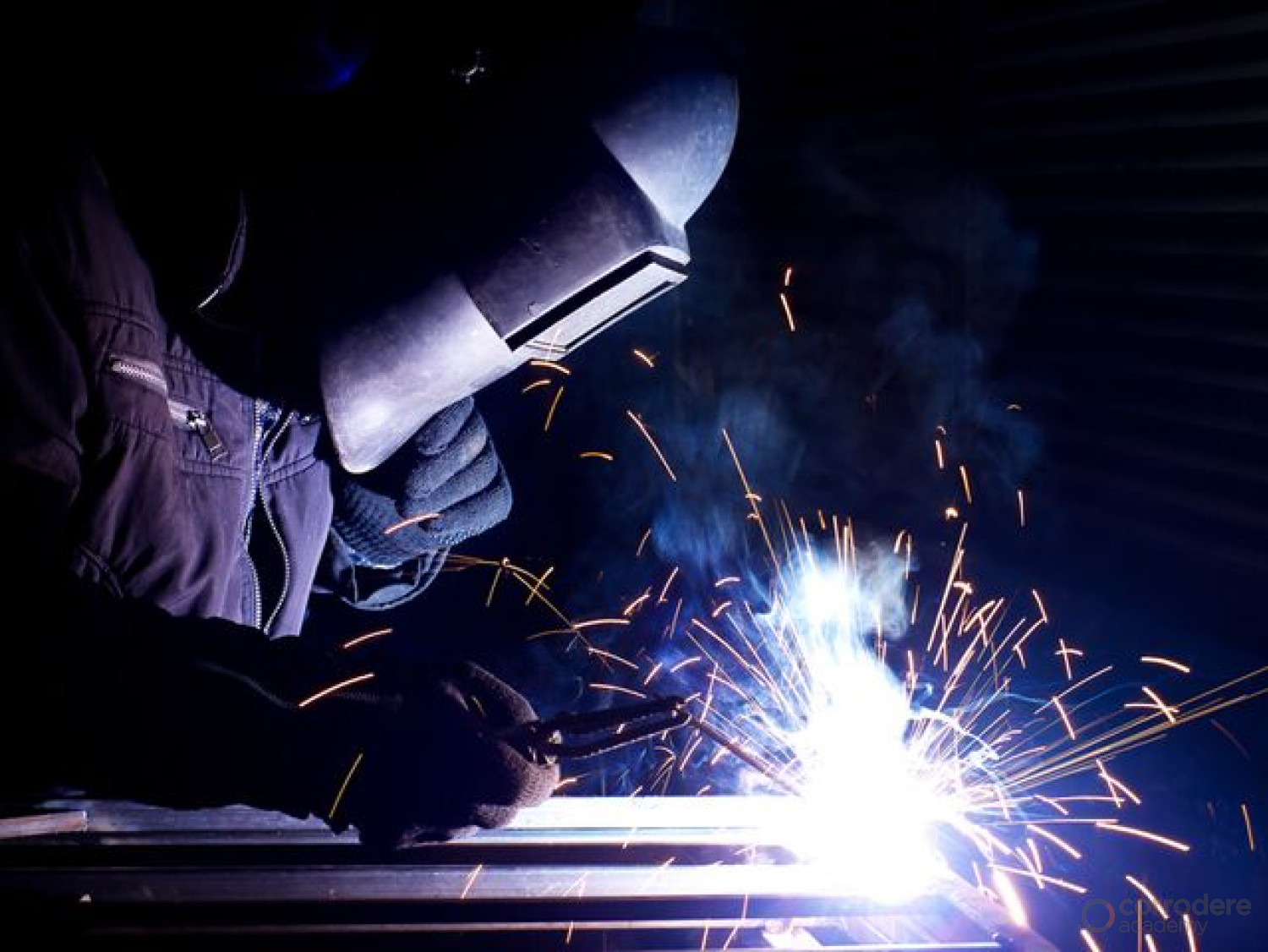Thermal Metal Spraying
Pre-surface Preparation
Slide /
Learning Outcome
Upon completion of this module, learners will be able to:
- Discuss the different types of steel irregularities
- Understand the implications of poor pre-surface preparation
- Demonstrate an understanding of the pre-surface preparation removal and cleaning techniques
Surface Preparation Requirements
It is essential that a high level of surface preparation is conducted prior to the application of thermally sprayed coatings.
Metal coatings which are propelled in molten state adhere to the surface by mechanical means (as opposed to paints which adhere chemically).
Because of this, the steel has to be abrasive blast cleaned to a high standard with a suitable surface profile.
There is little tolerance with the pre-preparation, surface preparation and application of thermally sprayed coatings.
There should be no contamination on the prepared steel and the spray application must be correct.
A correctly applied thermal spray coating will ensure that the coating will achieve an extended life compared to traditional liquid protective coatings.
Coating Specification
A coating specification is generally developed for the use of thermally sprayed coatings.
The coating specification can be specific to a project (flame boom, pipework etc.) or generic for an organisation who utilises thermally sprayed coatings on its assets. An example of the above is:
DEP SPECIFICATIONTHERMAL SPRAY COATINGS OF ALUMINUM DEP 30.48.40.31-Gen.
This specification is used by Shell and frequently specified by other asset owners and specifies the qualification of the operatives:
Before an individual thermal sprayer is qualified by the Principal, it shall be shown that the individual applicator is qualified in compliance with ISO 14918 for manual and/or mechanised application techniques.
Coating Specification
The coating specification will generally be very specific and detailed with regards to:
- Coating applicator skill
- Pre-surface preparation
- Surface preparation
- Application of the thermally sprayed coating
- Inspection and testing
Environmental criteria conditions for the surface preparation and coating application will also be detailed.
The application contractor should be fully conversant with the contract specification.
Pre-Surface Preparation
Pre-surface preparation inspection should be conducted on the steel structure to ensure that any steel irregularities are addressed prior to conducting the surface preparation process:
- Surface Contamination
- Surface Contaminates
- Sharp Edges
- Weld Spatter
- Poor Welding/Undercut
- Laminations
- Pitting Surfaces
The configuration of the structure has to be considered as good access is a requirement when applying thermally sprayed coatings.
Surface Contamination
All surface contamination such as oil and grease etc must be removed from the steel surface before conducting the surface preparation, otherwise, the contamination will spread over the surface.
A solvent clean can be used for localised areas in accordance with:
SSPC - SP1 Solvent Cleaning
A detergent wash (with hot water) can also be used for larger areas.
on completion of the cleaning/washing, the areas should be visually checked to ensure all the contamination has been suitably removed.
Surface Contaminants
Surface contaminants such as soluble salts should be removed. The maximum allowable concentration will be stated within the coating specification.
Example of a Thermally Sprayed Metal Specification:
The maximum total allowable soluble salts level on the surface shall not exceed 20 mg/m2, and shall be measured in accordance with ISO 8502-6 and ISO 8502-9. Other, proprietary field-testing techniques may be used if agreed by the Principal.
High-pressure water washing should remove the soluble salts below this level, however, surface contaminant levels can vary depending upon the steel manufacturing facilities, transport and storage.
Note: Additional soluble salts testing will have to be conducted after the abrasive blast cleaning process also.
The testing should be conducted by qualified coating inspectors.
Sharp Edges
Prior to the abrasive blast cleaning process, all sharp edges shall be removed in accordance with the coating specification.
A full inspection should be conducted on all the steel structure.
Sharp edges act as stress concentrators and provide a possible weak spot.
Sharp Edges
All sharp edges shall be rounded or radiused as illustrated.
A 2-3 mm chamfer (radii) is usually a requirement for thermally sprayed coatings application.
The inspection, before and after, should be conducted by a qualified coatings inspector.
Skip Weld
No skip welds should be allowed when applying a thermally sprayed metal coating.
The welds should be continuous with no gaps.
Skip welded structures will result in coating adhesion problems, rust staining and premature coating breakdown.
This photograph exemplifies structural steelwork (pre-blast) illustrating skip (tack) welding.
Weld Spatter
All weld spatter must be removed prior to the abrasive blast cleaning. The weld spatters should be removed (dressed) by grinding or scraping.
Care should be taken with any grinding or disking as this could damage a weld seam.
Note: A weld spatter examination must also be conducted after the abrasive blast cleaning process.
Weld Spatter
The weld spatter sits near the weld seam on top of the bare steel plate, which may contain mill scale.
Ultimately this weld spatter will corrode and should be removed.
Application of thermally sprayed metal coatings will not necessary coat and seal the isolated drops of weld metal (spatter).
Poor Welding/Undercut
The welds should be checked (usually by a qualified welding inspector) to ensure they meet the requirements of the specification and are smooth and continuous.
Poor welding will lead to surface preparation problems and adhesion problems with the applied thermal sprayed coatings.
A visual inspection is usually conducted before surface preparation.
Weld Undercutting
This diagram illustrates weld undercutting.
These areas can be difficult to apply a thermally sprayed metal coating and there is the potential for bare areas due to the inability for the molten metal to penetrate.
Premature failure of the applied coating in inevitable.
Lamination's
Laminations can be identified pre-surface preparation and after abrasive blast cleaning as illustrated.
Laminations should be removed, generally by grinding, followed by abrasive blast cleaning.
Care should be taken not to remove the steel thickness.
Minor laminations are classified as shelling.
Shelling can generally be removed by scrapers.
Lamination's
This diagram illustrates laminations/shelling on a steel surface.
This steel defect must be removed otherwise any applied thermal coatings will fail in that specific location.
Laminations and shelling should be identified by the steel or coatings inspector.
Pitted Surfaces
Pitted surfaces can be a problem as it is very difficult to apply a thermally sprayed coating into the pits.
These pits generally vary in diameter and depth and virtually impossible to completely clean and apply the coating.
The welding or steel inspector should advise on the rectification which could be weld fill or grinding.
Steelwork Configuration
Before any surface preparation is conducted the whole structure must be inspected to ensure that the thermally sprayed coatings can be practically applied.
The spray gun should be perpendicular to the surface to ensure good adhesion. There must be enough room for the thermal sprayer to manoeuvre the spray gun and equipment to all areas.
Areas of poor access should be 'boxed' in with additional steel plate.
Stainless Steel
Thermally sprayed coatings can also be applied to stainless steel surfaces.
Stainless steel should be a smooth surface (prior to surface preparation).
Stainless steel must also be checked for surface contamination and contaminants.
A visual inspection should be conducted on the stainless steel for any general steel irregularities.
Summary
Within this training unit, we have reviewed;
- The requirements of the coating specification
- Surface contamination and
- Surface contaminants
- Sharp edges
- Skip welds
- Weld spatter
- Lamination and shelling
- Weld undercut
- Pitted steel
We also discussed steelwork configurations and stainless steel.





































